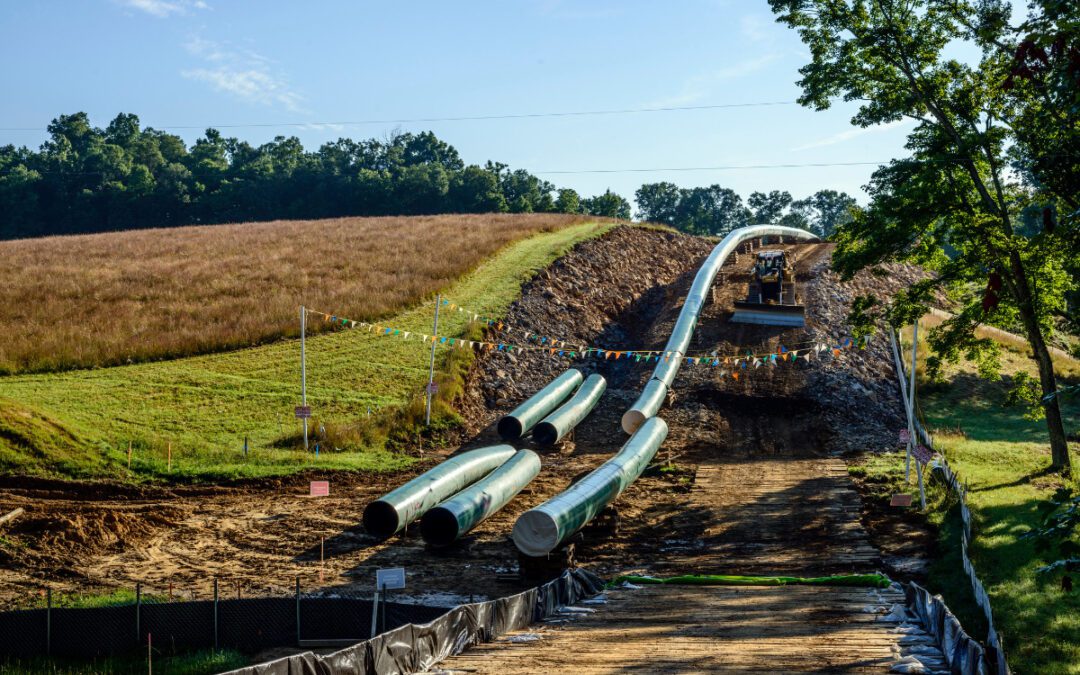
FILE - Emissions rise from the smokestacks at the Jeffrey Energy Center coal power plant as the suns sets Sept. 18, 2021, near Emmett, Kan. The Biden administration is setting tougher standards for deadly soot pollution, saying that reducing fine particle matter from tailpipes, smokestacks and other industrial sources could prevent thousands of premature deaths a year. (AP Photo/Charlie Riedel, File)
The Biden administration last month announced a set of four final rules designed to reduce harmful pollution from power plants fired by fossil fuels. The new rules from the Environmental Protection Agency (EPA) bolster President Biden’s goals of slashing recorded 2005 carbon pollution levels in half by 2030 and fully eliminating power sector emissions by 2035 through investment in clean energy.
Biden has taken an aggressive approach to climate policy ahead of the November election, with no signs of slowing down. Just last week, the president announced another set of climate-focused rules—separate from updated power plant standards—that would speed up the permitting process for new clean energy projects, especially those with long-term environmental benefits, and require closer consideration of environmental effects by federal agencies before approving infrastructure plans.
The four power plant rules announced in April add to this clean energy expansion by addressing carbon emissions, air toxin standards, wastewater pollution, and safe management of coal ash. The regulations could ultimately spell the end of coal-fired power plants in the United States, continuing a downward trend in their use as renewable energy solutions have expanded during recent years.
“Today, EPA is proud to make good on the Biden-Harris Administration’s vision to tackle climate change and to protect all communities from pollution in our air, water, and in our neighborhoods,” EPA Administrator Michael S. Regan said in a statement. “By developing these standards in a clear, transparent, inclusive manner, EPA is cutting pollution while ensuring that power companies can make smart investments and continue to deliver reliable electricity for all Americans.”
EPA says new rules would benefit public health, environment
Under the new rules, existing coal-fired power plants and new baseload gas-fired power plants would be required to control 90% of their carbon emissions—or close their doors. An EPA analysis estimates that this update could reduce carbon pollution by a whopping 1.38 billion metric tons by 2047 and lead to significant public health benefits, including reductions in premature deaths, asthma cases, and emergency room visits.
Another rule bolsters existing Mercury and Air Toxics Standards (MATS) by reducing emissions allowances for mercury and toxic metals from lignite-fired sources. Lignite is a form of brown coal made from compressed peat.
The EPA says cutting back on emissions from these types of plants would lower annual mercury pollution by 1,000 pounds by 2028 and lead to $300 million in public health benefits between 2028-2037. The toxic metal emissions described in this rule include arsenic, nickel, and lead, all of which pose significant health threats—including cancer and childhood developmental delays—to everyday Americans.
Harold Wimmer, President and CEO of the American Lung Association, applauded the new emissions standards.
“The new rules to clean up air pollution from power plants are good news for everyone, especially if there is a power plant near where you work, live or study,” he said in a statement. “Burning fossil fuels in power plants harms people’s lungs, makes kids sick and accelerates the climate crisis. The stronger clean air and climate protections will save lives.”
A new wastewater regulation would also reduce water pollutants from coal-fired plants by upwards of 660 million pounds per year, the EPA says. In conjunction with the Clean Water Act, this rule would establish stricter emissions standards for power plants whose polluted water is returned to streams, lakes, and other public waterways.
Finally, the new set of rules addresses coal ash management, which was previously unregulated by the federal government. Coal ash, which refers to residual materials produced by burning coal, often contains dangerous pollutants like arsenic, mercury, cadmium, and chromium. Some of this ash is disposed of at largely unregulated “impoundment sites,” leading to water contamination and threats to local wildlife. Under expanded EPA guidelines, new and existing disposal facilities would be required to implement a series of “safeguards” to prevent pollution.
Regulations likely to face pushback despite EPA commitments
While some in the power sector have expressed concern about the practical, legal, and economic feasibility of new emissions regulations, the EPA says it’s committed to working with power stakeholders to make changes that are both financially viable and environmentally sound.
“By announcing these final rules at the same time, EPA is following through on the commitment that Administrator Michael S. Regan made to industry stakeholders at CERAWeek 2022 to provide regulatory certainty as the power sector makes long-term investments in the transition to a clean energy economy,” an agency statement read.
“The standards are designed to work with the power sector’s planning processes, providing compliance timelines that enable power companies to plan in advance to meet electricity demand while reducing dangerous pollution.”

New Trump EPA rule would drastically curb protections for NC wetlands
If a new Trump EPA rule goes into effect, NC wetlands would be in more jeopardy, increasing the risk of flooding during major storms, environmental...

Hidden PFAS pollution uncovered in NC as EPA proposes reporting rollback
As researchers uncover even more PFAS contamination in NC, the Trump administration wants to loosen PFAS regulations. by Will Atwater, North...

Gas pipeline proposals in Virginia and NC worry community activists
MVP’s Southgate Extension pipeline and Williams Companies’ Southeast Supply Enhancement Project are proposed in close proximity within a single NC...

Gas pipeline proposals in Virginia and NC worry community activists
MVP’s Southgate Extension pipeline and Williams Companies’ Southeast Supply Enhancement Project are proposed in close proximity within a single NC...

In new carbon plan, Duke Energy gambles on coal
Duke Energy, North Carolina’s largest utility, cites the Trump administration’s rollback of air pollution regulations and increases in power demand...





